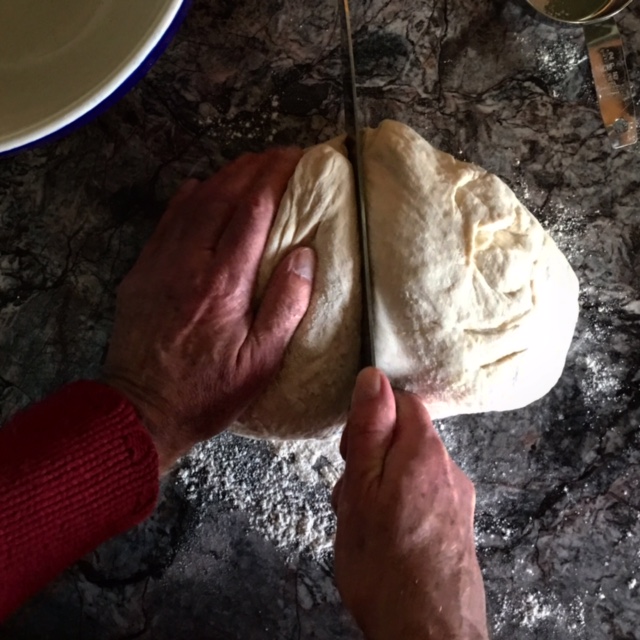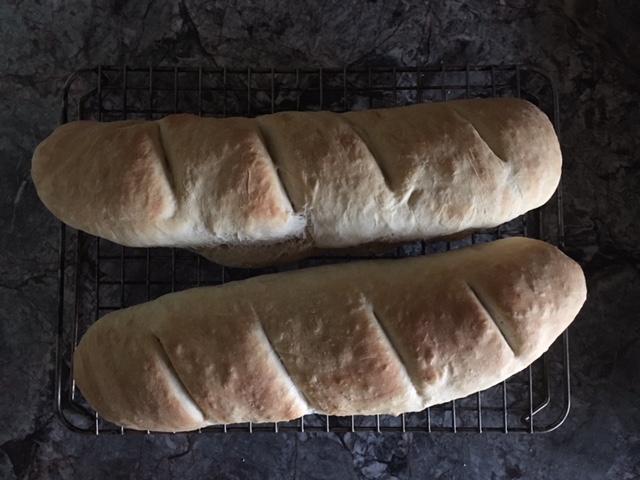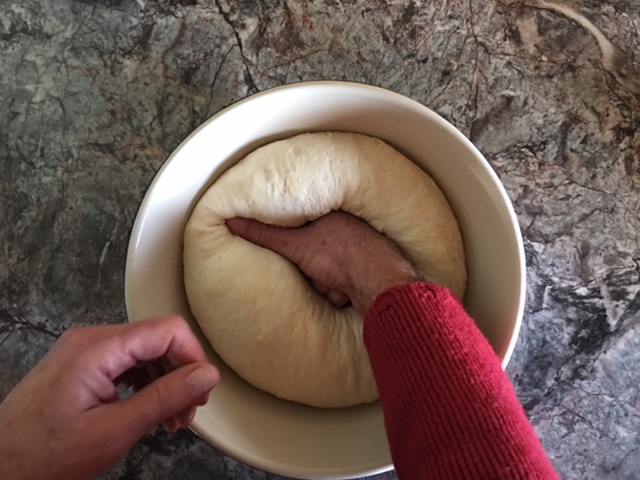There is a portal for everyone into the kitchen.
Mine was procrastination. Before a school assignment, exam, or academic project of any kind, I’d bake. Brownies. Cake. Cookies. Chocolate chip muffins. Anything that required my attention from the start, middle to delicious end. Then I’d work.
For my father, it was science. I didn’t realize this until last month, as I watched him methodically care for his sourdough starter. It was an in-between day, after Christmas but before New Years, when one is usually relaxing. But there he was, methodically tending to his bread. Apparently he’d been making bread for months now. It’s part of his routine, his ritual. This is news. His culinary interests, before retirement, included making peanut butter sandwiches, barbecuing or shucking oysters. To be fair, between these moments there were unique culinary projects. He’s a writer, and if a story involved a recipe for say, jellyfish burgers, he would go for it and file the experience under ‘R&D’.
But now, there’s bread. I asked him to explain how this came about, so naturally, he wrote me a story.

How I Came To Bake Bread
By Ian Cameron
My whole life I have been blessed to be in the presence of very competent, kitchen wise people: my mother, my aunts, my wife, my mother- in-law, my sisters-in-law, my brother-in-law, our daughters and sons-in-law.
I could always enjoy great food and get by with a little tidy up at the end of the meal and being very appreciative. After all every artist needs an audience.
Then I retired and my wife encouraged me to think about the kitchen as a minor post-retirement career challenge. I saw this as a ploy and feinted indifference but I must admit I was vaguely attracted by pleasant memories of the chemistry lab and how those experiments weren’t that different from food recipes.
We moved to the Eastern Shore of Nova Scotia and met Ron West. One night we were invited to the West’s for supper. Ron had baked his widely acclaimed Sour Dough French Bread. Ron, a whiz in the kitchen, had been stationed in France during his career in the Canadian AirForce. During this time he had tested numerous French Bread recipes and this recipe was the winner. I can’t remember the supper but I can remember the bread sitting there elongated, four slantandicular slashes across its light brown corn meal anointed crust. The wafting yeasty aroma and its warm presence evoked a cluster of homey memories. The texture produced a very satisfactory crunch on the incisors followed by a soft interior on the tongue. Hmmm…
Ron gave me the recipe and now you can’t get me out of the kitchen.

Ron West’s Sourdough French Bread
Starter
1 cup lukewarm water
1 1/3 cups all purpose flour
1/2 tsp yeast*
Dough
3 1/2 to 3 3/4 cups all purpose flour
2 tsp yeast
1 tbsp sugar
2 tsp salt
1 cup lukewarm water
1 recipe sourdough starter
Starter – In a medium bowl, combine water, flour and yeast. Beat with a wooden spoon until mixture is smooth. Cover bowl with plastic wrap then drape a tea towel over top of the bowl. Set bowl in a warm place** for 4-24 hours.
Dough – Set 3/4 cup flour aside. Mix 3 cups flour, yeast, sugar and salt in a large bowl. Stir water and sourdough starter into dry ingredients. Mix in enough reserved flour to make a soft dough that does not stick to the bowl. Tip dough on to a lightly floured surface and knead*** until smooth and elastic, about 10 minutes. Place bowl in a lightly oiled (butter or oil) large bowl, turning ball to coat with oil all over. Cover bowl with plastic wrap and a towel and leave to let rise in a warm place until doubled in size, 40-50 minutes.
Gently deflate dough with your clean fist. Cut dough in half. Using a rolling pin, roll one half into a rectangle, approximately 12 inches x 1 inch thick. Roll up tightly lengthwise; pinch the ends to seal. Roll ends between hands to stretch out. Transfer dough to one half of a greased cookie sheet. (Ron sprinkles the cookie sheet with cornmeal before the bread goes on, then sprinkles the top of the loaf with sesame seeds. My Dad uses parchment paper and leaves the dough as is). Repeat with other half of the dough.
Cover with plastic wrap and a towel and leave to rise in a warm place until dough keeps the imprint of a finger when pressed, but is still ‘springy’, 30-40 minutes. Slash bread across the top with a sharp knife.
Bake in a preheated 375 F oven for 30-40 minutes until golden. (Ron brushes the loaves with water before going in, and again every 10 minutes during baking, for additional crustiness. My Dad usually omits this step and has a little nap instead).
Lindsay’s notes:
*Yeast means dry regular yeast, not ‘quick yeast’, or fresh, cakey yeast.
** A warm place is a table with the afternoon sun streaming across it, or on the hearth in front of a not-so-roaring fire, or on the counter on a summer’s day, or in an oven, set to ‘proof’.
*** To knead means to fold dough then push it away from you with the heal of your hand, fold again, turn 90 degrees, push with heal of your hand, fold, turn 90 degrees… keep going. The dough will turn from sticky to elastic over the course of 10 minutes. It’s deeply satisfying.

